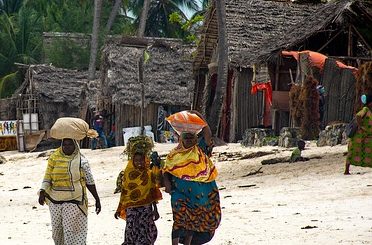Re-Advertisement: Tender No. AMREF/15/06/2021/007 -Terms of Reference For Consultancy To Create A Central Register For Fixed Assets (Property, Plants And Equipment) Procured From Global Fund Grants Managed By The National Treasury
1.Background
Created in 2002, the Global Fund to Fight AIDS, Tuberculosis and Malaria (GF) is a public-private partnership dedicated to mobilizing and allocating additional resources to combat Acquired Immune Deficiency Syndrome (HIV/AIDS), Tuberculosis (TB), and Malaria. The GF provides additional resources in support of effective interventions for national HIV/AIDS, TB and Malaria disease-specific and health systems strengthening (HSS) programs as prioritized and identified jointly with recipient countries.
Over the years, GF resources have been invested in procurement of pharmaceutical and non-pharmaceutical health products; human resources for health; capital assets such as equipment (medical, ICT, transport, office equipment, furniture etc.), infrastructure and intellectual property products such as computer software and databases; among others.
2. Context
In the last two decades, Kenya’s response to HIV/AIDS, TB and Malaria has recorded commendable achievements. In the mid and late 1990s, the mortality attributable to the three diseases was overwhelming and in excess of 326/100,000, 111/100,000 and 55/100,000 for HIV/AIDS, TB and Malaria respectively. However, this situation has since changed, though the three remain diseases of public health concern; with HIV/AIDS and TB being among the top 10 causes of years of life lost (YLL) in 2017 (Malaria is ranked position 11). Some of the visible achievements include enrolment of about 1.1m Persons Living With HIV (PLWH) (approximately 73% of the estimated PLWH) on ART, successful treatment of over 80% of patients with drug-sensitive TB annually, and a 47% reduction of malaria incidence as at 2017.
The GF has invested over US$900 million in Kenya since 2002, contributing to the control of the epidemics and scaled-up access to critical prevention and treatment services. The major investment areas for the GF grants include:
• Pharmaceutical products for HIV/AIDS, TB and Malaria treatment; and non-pharmaceutical commodities such as Long Lasting Insecticidal Nets (LLINs), condoms, Rapid Diagnostic Tests, nutrition products and laboratory consumables among others
• Capital assets such as medical equipment (microscopes, GeneXpert machines, Biosafety cabinets etc.); ICT equipment; office equipment and furniture; transport (vehicles, motorbikes and boats); buildings/renovations and other structures; and intellectual property products (such as computer software and databases), among others
• Human resources and related expenses (emoluments, capacity building and travel related expenses etc.)
• Operating and maintenance expenses
The National Treasury (TNT) has been the state Principal Recipient (PR) of GF grants. The Sub-recipients (SRs) of the grants are the disease control programs of the Ministry of Health namely; National HIV/AIDS and Sexually Transmitted Infections Control Program (NASCOP), National AIDS Control Council (NACC); National TB Program (NTP) and National Malaria Control Program (NMCP). The PR is responsible for overall implementation of grants by SRs, technical coordination for SRs, financial management, programmatic and financial monitoring and reporting, and procurement management, the latter largely through Kenya Medical Supplies Authority (KEMSA). The SRs are largely responsible for implementation of programmatic activities, including technical support to counties and health facilities.
3. Statement of the problem
Significant amounts from successive GF grants have been utilized to acquire tangible assets (capital assets) that are essential for implementation of the disease control programs. Such capital assets are to be found at various program implementation levels including PR/TNT, MoH, Disease control programs (NASCOP, NACC, NTP & NMCP) and county departments of health and health facilities country-wide.
However, there is no single / central register that accurately captures and maintains both financial and non-financial information pertaining to the assets for purposes of easy identification and verification when required. This state is in contravention with statutory requirements, impedes asset audit verification processes, affects asset utilization across program implementation levels and creates risks for duplication of asset purchases.
4. Purpose of the assignment
The overall purpose of the assignment is to develop a central register (in form of an Excel Spreadsheet) for fixed assets acquired from GF grants that fall within the limit of seven (7) years of useful life period.
5. Specific tasks
1. To identify fixed assets (and physical locations) purchased from successive GF grants during the 2012 –2020 period;
2. To carry-out physical verification and tagging of assets identified; and
3. To create a comprehensive Excel based Fixed Asset Register that capture essential information, including locations and functional states for the assets.
6. Scope of assignment
The methodology for the assignment will largely entail desk review of available GF grant documents and records, enquiries and interviews with GF grants managers and focal persons, and physical asset verification and tagging at all levels of grant implementation, including PR/TNT, MOH, disease programs, County Departments of Health and health facilities, among others.
6.1. Desk review: The consultant will review grant documents and records at PR/TNT and SR/MOH for purposes of identifying budget lines and allocations related to procurement of assets, beneficiaries, purchasing prices and locations of use of assets. The documents include:
• Approved budgets and procurement plans for grants implemented during the period 2012 – 2020
• Financial management documents such as financial reports, votebooks and cashbooks
• Fixed assets registers, inventories and records that may be available at PR/TNT and SR/MOH levels
6.2. Task planning meetings: The consultant will gather additional information on assets, and validate such information obtained from desk review by:
a. Conducting national level meetings with core grant implementation focal persons comprising of GF managers, finance officers, M&E officers and laboratory focal persons, among others; and
b. Conducting county level meetings with grant implementation focal persons and procurement officers comprising of three disease coordinators and a procurement officer per county (county task teams).
Counties will be grouped in eleven (11) clusters – Nairobi, Central, South Rift, North Rift, Central Rift, Western, Coast Nyanza North, Nyanza South, Eastern North, Eastern South and North Eastern.
Further, the county level meetings shall serve as orientation training for the asset physical verification and tagging exercise.
6.3. Development of a detailed list of assets and creation of tagging codes: The consultant shall use asset information obtained from desk review and task planning meetings to compile a detailed list of assets by grant, and create tagging codes; disaggregated by sub-county. Information to be captured per asset using a standard checklist include:
• Asset name by category – major categories include medical equipment (laboratory equipment, X-Ray equipment etc.), office equipment and furniture, ICT equipment (computers, printers, projectors, servers etc.), intellectual property such as computer software and databases, transport equipment (motor vehicles, motor boats, motor bikes etc.), and infrastructure (constructed buildings, prefabricated structures, renovated buildings etc.)
• Description of asset (Make, Model, Serial Number etc.)
• Acquisition date
• Purchasing price
• Location
6.4. Physical verification and tagging of assets:
a. National level entities (5 days)
The consultant’s team will undertake the activity for national level entities covering TNT/PR, MOH, disease programs (NASCOP, NTP, NACC and NMCP) and other entities including reference laboratories. The consultant will utilize this opportunity to pre-test the verification checklist that captures detailed asset information, including date of last service and mechanical state.
b. County level verification and tagging (maximum 20 days – duration of activity for each county will be dependent upon the number of sub-counties that have been recipients of GF procured assets)
The activity will be carried out by the county task teams with direct supervision by the consultant. The teams will ensure full coverage of entities and health facilities with GF acquired assets at all levels of implementation.
c. Quality control
Quality control activities will be undertaken by TNT/PR team for purposes of ascertaining accuracy and reliability of information collected by both the consultant and county task teams. The activities include:
• Providing oversight during desk review
• Participation in task planning meetings and trainings for verification and tagging teams
• Carrying out verification and tagging oversight visits in ten counties representative of the ten regions.
Further, the consultant will be required to ensure that a checklist for each asset verified will be completed and a smartphone photo image of the asset information label / template taken and submitted via WhatsApp for documentation purposes.
7. Deliverables
1. An inception report:
▪ A write up on the Consultant’s understanding of the assignment, including the methodology and indicative budget.
▪ A documentation of GF grants for period 2012 – 2020; with clear identification of implementers, budget lines, allocations and beneficiaries of fixed assets.
▪ Asset identification codes
▪ A detailed checklist to be used for physical verification and tagging of assets
▪ Constituted consultant and county task teams, task allocation and final budget for the verification and tagging exercise
2. Excel based Fixed Asset Register (FAR)
3. A final report on the consultancy; and recommendations on maintenance and annual updating of FAR
8. Duration of assignment – 60 consultant days
9. Reporting
The Consultant will report to the National Global Fund Coordinator, The National Treasury and Planning through a task coordination team.
10. Consultant qualifications
The ideal service provider should be a business management firm with diverse competencies that include public financial management, public procurement, accounting, financial audit and project management, among others.
For purposes of this task, the lead consultant should be an expert in financial management, or any other business management related field with a minimum academic qualification of a Master’s degree. The consultant should:
▪ Demonstrate extensive knowledge of the Public Finance Management;
▪ Possess a good understanding of the health service delivery system in Kenya, including the devolved system of government;
▪ Possess a minimum of ten years of progressively responsible experience in public finance management preferably in a GoK Ministry, with sound experience working with on-budget development partner funded projects;
▪ Possess demonstrable ability to work with multi-disciplinary teams;
▪ Have good written and oral communication skills with ability to express ideas clearly, logically and effectively;
▪ Good command of computer applications and information technology such as Excel, Word, PowerPoint.
The lead consultant shall be assisted by one accountant and one procurement specialist, both with Masters level education qualifications; and demonstrable experience in public financial management and public procurement respectively.
Further, the service provider shall be required to recruit a coordinator for each of the eleven county clusters over the period of asset verification and tagging. The coordinators should possess a minimum of bachelor’s degree qualifications with demonstrable experience in operations of devolved health system and project management…
Please download a detailed tender document at: https://amref.org/tenders/re-advertisement-tender-no-amref-15-06-2021-007-terms-of-reference-for-consultancy-to-create-a-central-register-for-fixed-assets-property-plants-and-equipments-procured-from-global-fund-grants-ma/
Deadline: 12 Noon on or before Thursday 9th December 2021.
Group Financial Resources Director
Amref Health Africa
P. O. BOX 30125-00100,
NAIROBI
Amref Health Africa reserves the right to accept or reject any or all bids and is not bound to give reasons for its decision.








